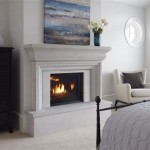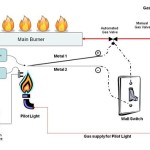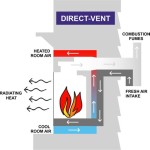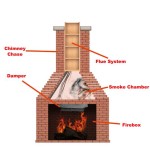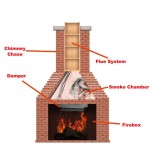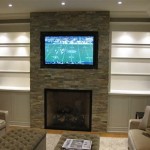Cinder Block Outdoor Fireplace: A Durable and Affordable Heating Solution
An outdoor fireplace provides a focal point for social gatherings, extending the use of outdoor spaces into cooler seasons. While numerous construction methods exist, utilizing cinder blocks presents a cost-effective and straightforward approach to building a durable and functional outdoor fireplace. The inherent modularity of cinder blocks allows for customization in design and size, accommodating various aesthetic preferences and spatial constraints. This article explores the advantages of constructing a cinder block outdoor fireplace, outlining key considerations and construction principles.
Cost-Effectiveness and Accessibility
One of the primary benefits of using cinder blocks is their affordability compared to other materials such as brick, natural stone, or pre-fabricated fireplace kits. Cinder blocks are readily available at most home improvement stores and building supply centers, further contributing to their accessibility. This widespread availability also simplifies sourcing replacement materials if repairs are necessary at a later date. The relatively low cost makes this a favoured option for DIY enthusiasts and those looking to enhance their outdoor living space without a significant financial investment.
The reduced cost of materials translates to overall savings on the project. By minimizing expenses on the core structural component, more resources can be allocated to finishing elements, such as fire bricks for the firebox, decorative facing materials, or additional landscaping around the fireplace. This financial flexibility allows for a customized and personalized outdoor fireplace without exceeding budgetary limitations.
Durability and Longevity
Cinder blocks are manufactured to withstand significant loads and environmental stresses. Their inherent strength makes them an ideal building material for outdoor structures exposed to the elements. A properly constructed cinder block fireplace can endure years of use, resisting cracking, warping, and decay that might affect structures built from less robust materials. This durability translates to reduced maintenance requirements over the lifespan of the fireplace.
The fire-resistant properties of cinder blocks also contribute to the safety and longevity of the structure. While fire bricks are recommended for lining the firebox to directly withstand the intense heat, the surrounding cinder block construction provides an additional layer of protection, minimizing the risk of fire spread and ensuring the structural integrity of the fireplace during prolonged use. The non-combustible nature of the material makes it a safe choice for an outdoor heating appliance.
Design Versatility and Customization
Despite their utilitarian appearance, cinder blocks offer surprising design flexibility. The modular nature of the blocks allows for a variety of configurations, from simple rectangular fireplaces to more elaborate designs incorporating arches, shelves, or built-in seating. The blocks can be easily cut and shaped to accommodate specific design requirements, providing a degree of customization not easily achieved with pre-built structures.
The aesthetic appeal of a cinder block fireplace can be enhanced through various finishing techniques. The exterior can be veneered with brick, stone, or stucco to match the existing architecture of the home or create a specific stylistic effect. Painting or staining the cinder blocks is another option, providing a cost-effective way to customize the appearance. Decorative concrete overlays can simulate the look of more expensive materials, offering a visually appealing and durable surface. These finishing options transform the utilitarian cinder block structure into an aesthetically pleasing focal point for the outdoor space.
Furthermore, the interior of the firebox can be customized with different fire brick patterns or the addition of a cooking grate for grilling. The flue can be designed to accommodate a chimney cap or spark arrestor, enhancing safety and functionality. These design variations cater to individual preferences and functional needs.
Building a cinder block outdoor fireplace is typically a manageable DIY project, but proper planning and adherence to safety guidelines are crucial. The foundation must be level and stable to support the weight of the structure. Mortar joints should be carefully filled to ensure structural integrity and prevent water penetration. Proper ventilation is essential for efficient combustion and to prevent smoke from billowing back into the seating area. Fire bricks are necessary to line the firebox.
Local building codes and regulations should be consulted prior to construction to ensure compliance. Permits may be required, and specific guidelines may dictate the placement of the fireplace in relation to property lines, structures, and vegetation. Adhering to these regulations ensures safety and avoids potential legal issues.
In summary, a cinder block outdoor fireplace represents a practical and economical solution for creating a comfortable and aesthetically pleasing outdoor living space. Its cost-effectiveness, durability, and design versatility make it an attractive option for homeowners seeking to extend the enjoyment of their outdoor areas throughout the year.

Concrete Block Outdoor Fireplace

Cinder Block Outdoor Fireplace Plans Approximate Dimensions 10 Wide 5 Deep 8 Tall Backyard Diy

Build An Outdoor Fireplace The Shed

Chris Loves Julia Diy Outdoor Fireplace Home Sweet Homes

Concrete Block Outdoor Fireplace

Cinder Blocks Are Easy To Find For Free And They Have Almost Unlimited Diy Potential Here S Outdoor Fireplace Plans Backyard

Outdoor Fireplace With Bench Seating W Tips From A Professional Mason

Santa Cruz Diy Outdoor Fireplace Plan 40 Pg New Zealand

30 Amazing Diy Fire Pit Ideas Cinder Block In Ground

How To Build An Outdoor Fireplace Today S Creative Life
Related Posts


